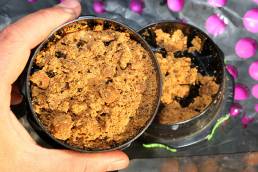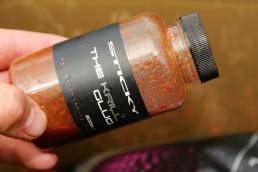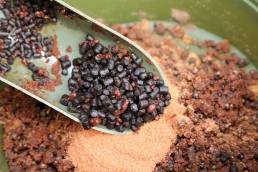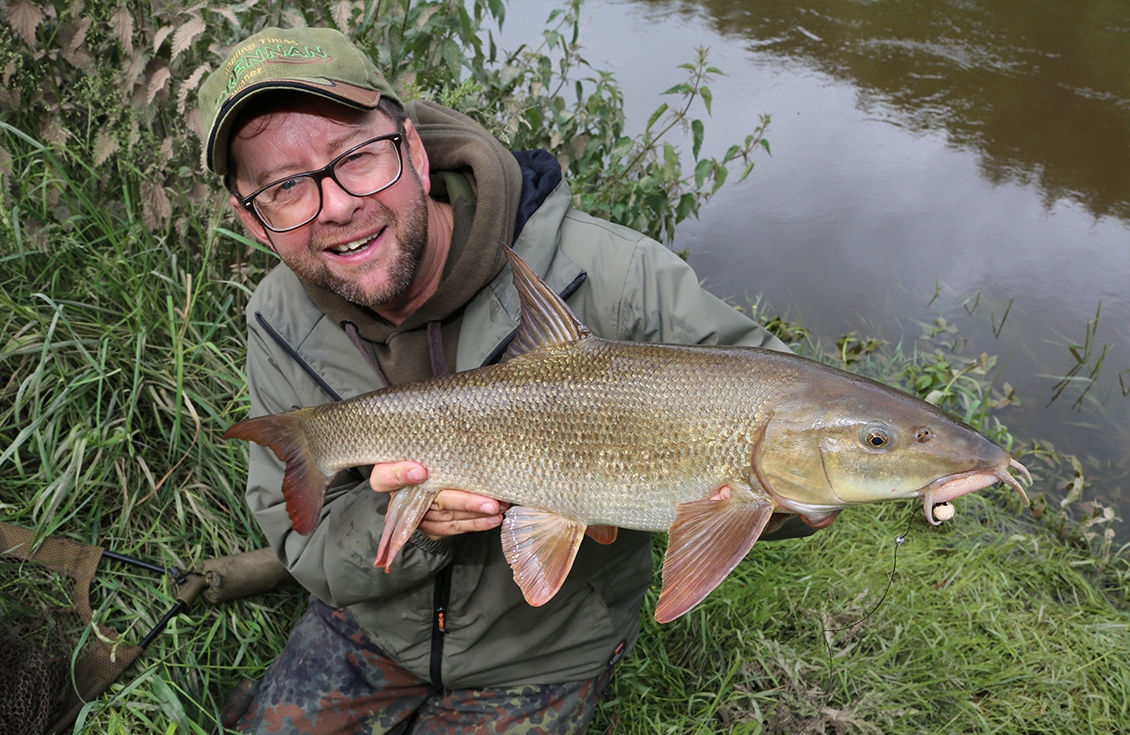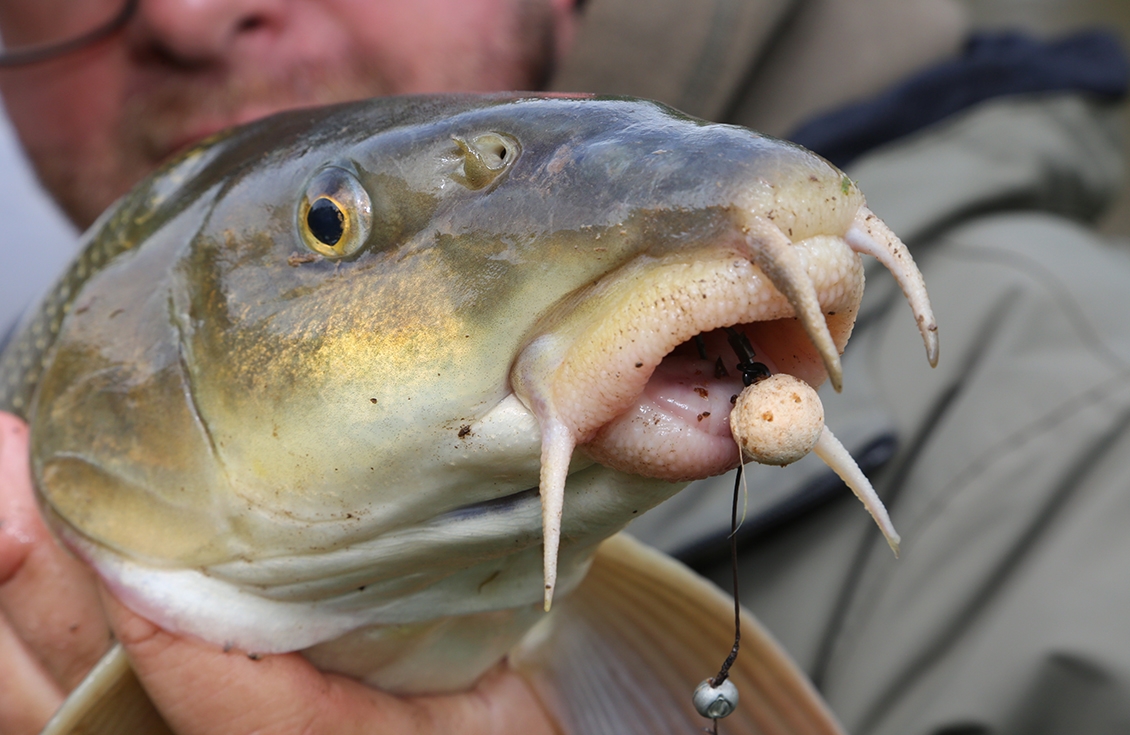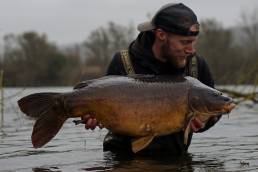
Wafters for barbel - MARTIN BOWLER
8th October 2020
Martin Bowler discusses how crossing over tactics and adapting can help you bag more barbel this season, as he looks back on a memorable session which changed his angling approach for the species.
I like to keep my angling tactics relatively simple for all species, relying on watercraft to be successful far more than anything else. That said, I’m always open to improvements and being a willing student of every facet of our wonderful field sport, there’s often crossover points where a certain tactic for one species appears to tick all the boxes for another. Carp fishing is so ruthlessly effective it’s little wonder that I have cherry picked bits and used them to devastating effect in other areas of my fishing.
Over 25 years ago, I remember sitting in a swim full of barbel blanking for hours on end with only the occasional line bite. Suddenly my mistake dawned on me and I started to wonder why I was fishing with a line so taut the rod tip was bent over and running directly down to the lead. I would never do this in the margins for carp so why was I doing it for barbel? Simply because tradition had told me to and I was on autopilot! A coffin weight trapped between float stops 6 feet up the line acting as a back lead transformed the day and my results for years to come and when I wrote about it the results of many others. So being fully aware of the benefits of doing something different I was full of optimism when I took a carp rig and new bait barbel fishing for the first time.
The mountain had erupted with a volcano of water and the saturated ground could no longer hold back the tidal wave. A spate was in full swing and the valley below was brimming with a dirty brown flood. A scene of winter? The petals and birdsong told a different story – high water can come at anytime even in late summer. For a while at least the river would be out of bounds for most anglers, but not this one! As I climbed out the back of the van after a few hours of desperately needed sleep, I was pleased to see it had actually risen. Five feet above normal level meant every regular fishing spot had been wiped out and as I sipped my first coffee of the day the Wye pulverised the boulders that had been shaped by centuries of similar occasions. I could understand why many would be confused by such a situation or simply unwilling to fight the river, instead waiting for better days. However, this is a shame because if anything the fish are easier to find and secondly the sport will be more prolific than that of a bright sunny day. Sure, you won’t get soaked, but just like the waterproofs, you might also find the camera remains unused!
My first angling task was to locate where I should cast and at such times it’s best to think like a fish! Would you really want to spend all day battling the flow? Ok it brings food to you but far better to sit off the pace and occasionally move back into position. There’s one word for this and it is ‘crease’ and in a flood this is what you should be looking for. I had 3 to choose from over a quarter of a mile and the first was actually created by a salmon boat with its hull now at anchor helping to divert the river and remove a little pace. A more typical scenario with a bush sitting just upstream formed the second and I knew that it was here that the bottom started to rise after a deep hole with a wonderful smooth gravel bottom. The third and final location was dictated to by another bush upstream but it was much more dense actually creating a slack in which to lower the rig into. Like the two before this was baited up via a dropper with pellets and boilies before being allowed to stew. By using the metal contraption importantly, I could be absolutely certain where the free offerings had landed and hopefully all I needed to do was wait half an hour. With tackle to prepare this wouldn’t be frustrating at all and I set off back to the van.

For this trip I was going to experiment with the terminal tackle but never with the rod; a 2¼lb test curve or the line 18lb Syncro XT. Given the state of the river I opted for a belt and braces approach utilising the abrasion resistance of a 1.5m length of ESP Leadcore. Onto this sat a large and heavy cage feeder before a 3ft length of 20lb Tungsten Loaded coated braid. Nothing unusual in that but the final part was, as I whipped on a size 6 Cryogen Curve Shanx via a knotless knot. An AAA shot sat 3 inches below to help drag the hook home. On the hook, I trapped a bait screw between grip stops in a fashion that carp anglers refer to as the ‘German rig’. My plan was to combine it with a bright white Sticky Signature Squid wafter that would not only be visual but pulse out a huge amount of attraction with its strong flavour level. I have never felt fluoro pop-ups would be good for barbel due to constantly moving around in the flow but a wafter might be a different kettle of fish!
Before fishing with anything new, I always take time to observe it in the margins and could soon see an alteration that needed to be made.

The grip stops and thus the hookbait needed to sit closer to the eye of the hook than when I was angling for carp. This was because the flow would actually push the boilie and by sitting it further back initially on the cast it would end up in the correct position in situ over the bend and disguise the metal work perfectly. It looked good but would it work in practise?
The boat was the first area I chose, and it was too tempting not to sit aboard it and simply cast downstream, before holding the rod and feeling for bites. Immediately something showed interest in my wafter and feeder load of crushed Krill boilies, pellets, Active Mix and copious amounts of Cloudy Krill liquid. I could tell straight away chub were responsible by their erratic nature and wasn’t surprised when I soon played one to the net. The system worked but what I really wanted to know was if barbel liked it and a few chub later I knew it was time to move if I was going to find out.
I decided to head straight down to the bottom swim where the water was slackest and soon, I had a wafter sitting amongst a feeder load of free offerings. Only feet away the Wye was a cauldron but in the lea of the bush, the tip barely moved. Well that was until it cranked over and the reel spool began to sing. It wasn’t a huge fish but it was a barbel and that meant a lot as it showed the experiment worked. The species also wanted to demonstrate why you don’t want to miss a warm water flood as more barbel lined up to take the bait. They grew in size and so did their frequency coming to the bank. Both the river and sport was wild and when it’s like that I’m happy to swap good weather for waterproofs!
The real success however was, I had a new approach to tempt both chub and barbel rarely used by other anglers. I doubted it had been tried very often therefore giving me an edge for the coming winter and beyond. Thinking outside the box and utilising tactics and experience from all facets of angling has regularly paid dividends for me and is why we should never stop trying to learn or blind ourselves by only studying one species. A tub of wafters always comes with me now on my river trips and if you are looking for something new on the stretches you fish then give them a try – I’m sure you won’t be disappointed.

